2nd Class EVS Our Universe Question Bank Our Universe
1. Which of the following is NOT a source of light?
(A) A planet
(B) A star
(C) A burning candle
(D) An electric bulb
Answer:
A
A planet is not a light source.
2. Which of the following shines in the sky during the day?
(A) A comet
(B) The moon
(C) The sun
(D) A planet
Answer:
C
The sun is a hot ball of fire. It shines in the sky during the day.
3. Which of the following things allows light to pass through it?
(A) A metal plate
(B) A pane of glass
(C) A book
(D) A piece of wood
Answer:
B
A piece of transparent glass pane allows light to pass through it.
4. Shadows are formed
(A) when light passes through an object.
(B) when light passes through a transparent object.
(C) when something comes in the way of light.
(D) when there is no source of light.
Answer:
C
Shadows are formed because something comes in the way of light.
5. Which of the following is NOT a source of light?
(A) The sun
(B) Rainbow
(C) Stars
(D) Fire
Answer:
B
A Rainbow is not a source of light.
6. Observe the figure given below. What is observed when light falls on a star-shaped card?
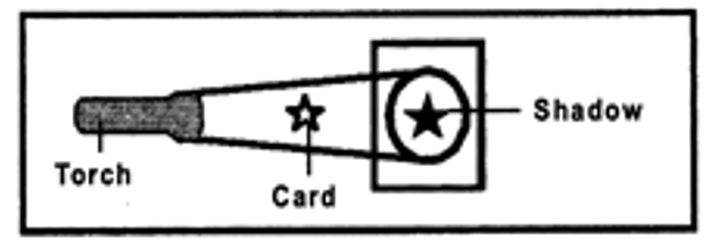
(A) A shadow is formed before an object.
(B) A star-shaped shadow smaller than the card is formed.
(C) A star-shaped shadow bigger than the object is formed.
(D) There is a change in the shape of the object.
Answer:
C
A star-shaped shadow is formed when light falls on a star-shaped object.
7. Observe the figure showing the sun and a tree. Where will the shadow of the tree fall?
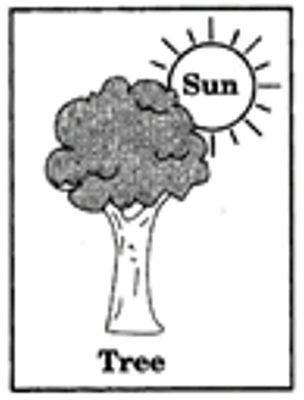
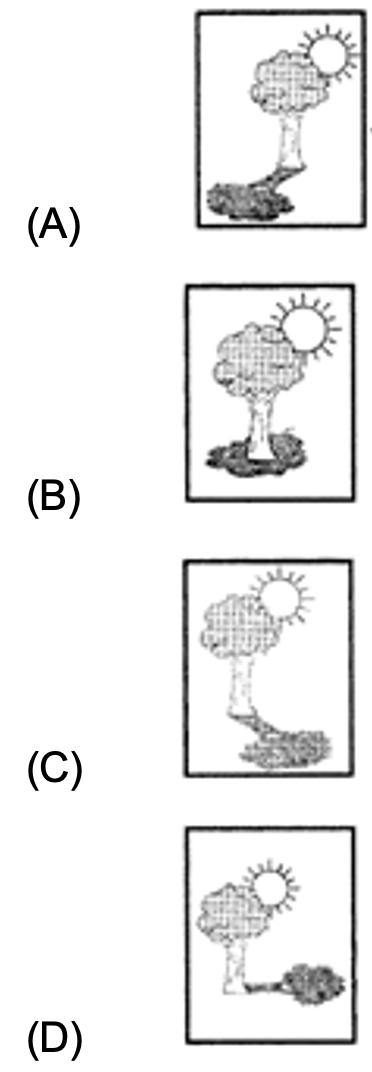
Answer:
A
Option (A) represents the correct position of the shadow. A shadow is formed opposite to the source of light.
8. Which of the following provides energy that supports life?
(A) The sun
(B) The moon
(C) The stars
(D) The earth
Answer:
A
The sun supports life. Green plants synthesize food in the presence of sunlight. All animals directly or indirectly depend upon plants for their food.
9. Which of the following is a star?
(A) The earth
(B) The moon
(C) The sun
(D) The venus
Answer:
C
The sun is a star.
10. An object casts a shadow when
(A) light passes through it
(B) it absorbs light
(C) it blocks the path of light
(D) light bends around the object
Answer:
C
An object casts a shadow when it blocks the path of light.
11. Which of the following statements about the moon is NOT true?
(A) It is smaller than the Earth.
(B) It gives out its own light.
(C) It is the satellite of the Earth.
(D) It has no air and water.
Answer:
B
The moon reflects light from the sun.
12. The shadows change direction with the change in the position of the
(A) earth.
(B) source of light.
(C) object.
(D) All of these
Answer:
B
A shadow changes direction with a change in the position of the source of light.
13. Which of the following appears to change its shape when observed from the earth?
(A) The sun
(B) The moon
(C) A comet
(D) All of these
Answer:
B
The moon changes its shape.
14. The picture given below shows the shape of the Moon in the night sky. What is the phase of the moon shown in the picture?
(A) New Moon
(B) Crescent
(C) Half Moon
(D) Full Moon
Answer:
B
The moon is of crescent shape.
15. The surface of the earth becomes ____ and _____ without the sun.
(A) cold and dark
(B) bright and warm
(C) cold and bright
(D) dark and warm
Answer:
A
The earth becomes cold and dark without the sun.
16. Match the following terms in Column- I with their answers in Column-II.
| Column-I | Column-II | ||
|---|---|---|---|
| p. | I can be seen only at night | i. | Globe |
| q. | I rotate on own axis | ii. | The sunny |
| r. | I give you heat and light | iii. | The earth |
| s. | I am a model of the earth | iv. | The moon |
(A) p-iv, q-iii, r-ii, s-i
(B) p-i, q-ii, r-iii, s-iv
(C) p-iii, q-ii, r-i, s-iv
(D) p-iv, q-ii, r-i, s-iii
Answer:
A
The moon can be seen clearly at night, the earth rotates on its own axis, the sun gives out heat and light, a globe is the model of the earth.
17. Which of the following is at the centre of the solar system?
(A) The sun
(B) The moon
(C) The earth
(D) A satellite
Answer:
A
The sun is present at the centre of the solar system. All planets revolve around the sun.
18. Which of the following takes twenty four hours for one rotation?
(A) Rotation of the sun on its axis
(B) Rotation of the earth on its axis
(C) Rotation of the moon on its axis
(D) Rotation of the solar system
Answer:
B
The earth takes twenty four hours to rotate on its own axis.
19. When the sun is above our head, the shadows formed are
(A) very long.
(B) long.
(C) short.
(D) All of these
Answer:
C
At noon, when the sun is present just above our head, the shadows formed are the shortest.
20. Look at the shadows at different times of the day. Which of the following pictures is/are correct?
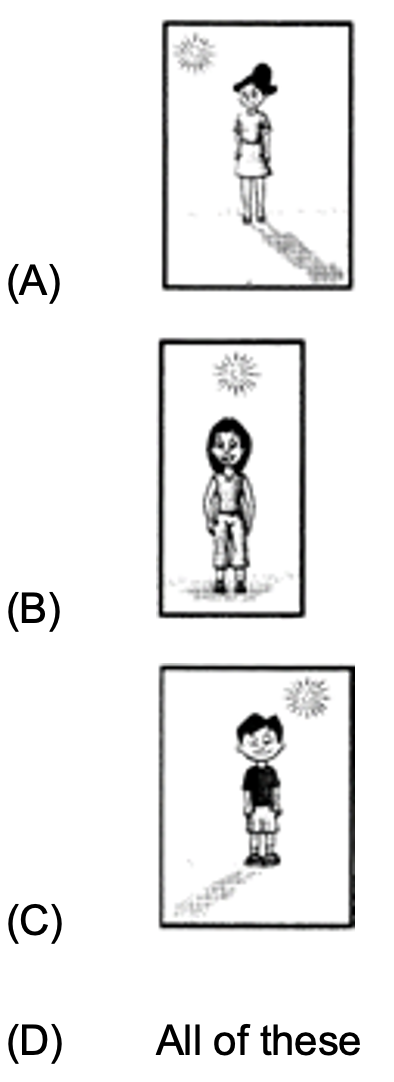
Answer:
D
All the pictures are correct. Shadows are formed on the opposite side of the light source.
21. Which of the following is at the center of the solar system?

Answer:
C
Sun is at the center of the solar system.
22. How many planets revolve around the sun in the solar system?
(A) 8
(B) 9
(C) 10
(D) 11
Answer:
A
Eight planets revolve around the Sun in the solar system.
23. The sun is the source of ___________ for all living creatures.
(A) Light
(B) Energy
(C) Both
(D) None of these
Answer:
C
The sun is the source of both light and energy for all living creatures.
24. Which of the following is a natural satellites of the earth?
(A) Moon
(B) Ganymede
(C) Titan
(D) None of these
Answer:
A
Moon is the natural satellite of the Earth.
25. Which of these plants lie between earth and Jupiter?
(A) Mercury
(B) Venus
(C) Mars
(D) None of these
Answer:
C
Mars lies between Earth and Jupiter.
26. The planets marked 1, 2, 3, 4 are called ______ in the solar.
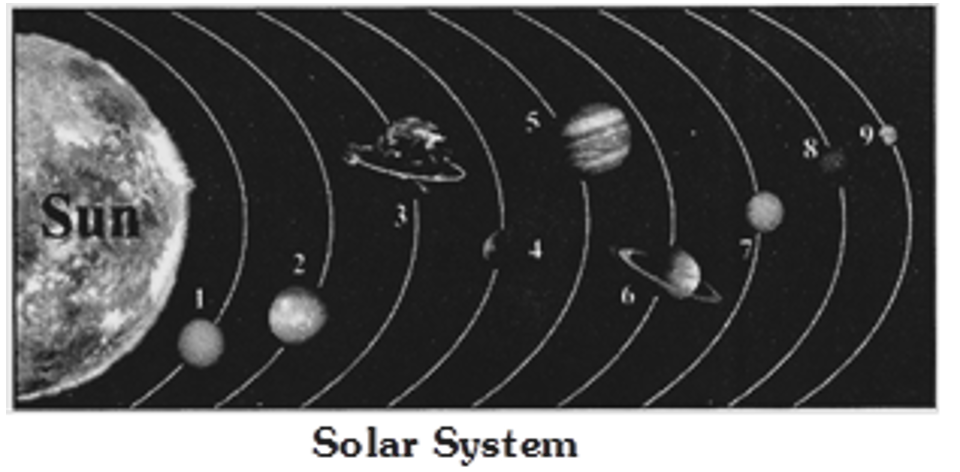
(A) Outer plants
(B) Inner plants
(C) Red plants
(D) None of these
Answer:
B
The planets 1,2,3,4 are called inner planets.
27. The biggest planet in the solar system is ________.
(A) Saturn
(B) Jupiter
(C) Neptune
(D) None of these
Answer:
B
Jupiter is the biggest planet in the solar system.
28. (i) This is the only planet in the solar system that has life.
(ii) It looks blue as water is present on it.
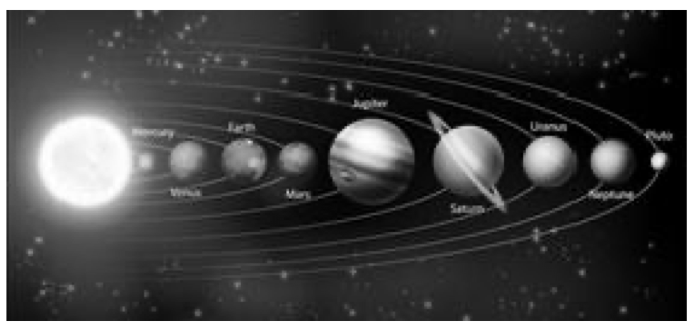
(A) Mercury
(B) Venus
(C) Earth
(D) None of these
Answer:
C
Earth has only life in the solar system.
29. (i) This planet has rings along is equator.
(ii) The rings are made up of dust and ice.
(A) Saturn
(B) Neptune
(C) Uranus
(D) None of these
Answer:
A
Saturn has all these characteristics.
30. Which of the following lines is true?
(A) Moon is a star
(B) Moon is a planet
(C) Moon is a natural satellite
(D) None of these
Answer:
C
Moon is a natural satellite of planet Earth.
31. World earth day is celebrated on April 22 every year. Which of the following is related with it?
(A) To protect our planet
(B) To protect planet and animals
(C) Ton clean up the environment
(D) All of these
Answer:
D
All of these.
32. The planet which is the farthest from the sun is
(A) Venus
(B) Saturn
(C) Neptune
(D) None of these
Answer:
C
Neptune is the farthest planet from the Sun.
33. The movement of the earth about its axis is called ________.
(A) Rotation
(B) Revolution
(C) Orbit
(D) None of these
Answer:
A
Rotation is the movement of the Earth about its axis.
34. Day and night is mainly caused due to_______ of earth.
(A) Revolution
(B) Rotation
(C) Constellation
(D) None of these
Answer:
B
Rotation is responsible for the occurrence of day and night on earth.
35. A person who travels in space is called ______.
(A) Scientist
(B) Robot
(C) Astronaut
(D) None of these
Answer:
C
A person who travels in space is called an astronaut.
36. The figure shows the shadow formed by the tree in
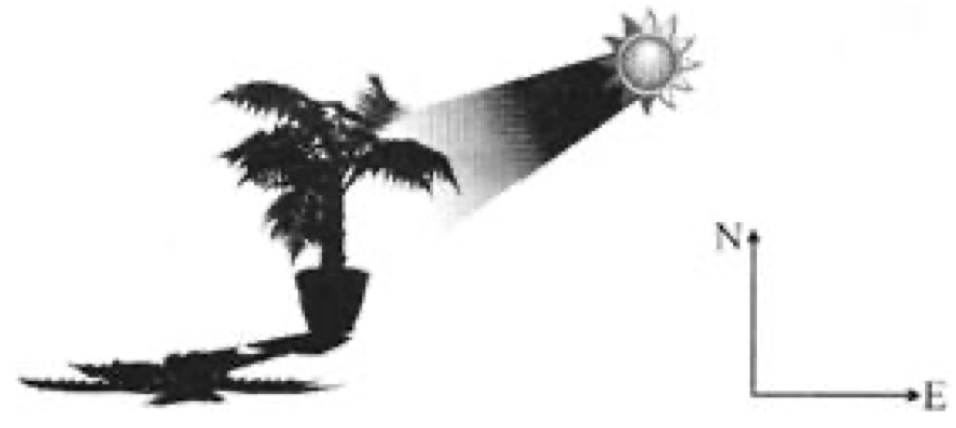
the_____________.
(A) Evening
(B) Morning
(C) Noon
(D) None of these
Answer:
B
In the morning, the shadow is formed on the west side.
37. Which of the following is not a source of light?
(A) Sun
(B) Planets
(C) Electric jump
(D) None of these
Answer:
B
Planets do not have light of their own.
38. Which of these shadows shows the shadow at noon time?
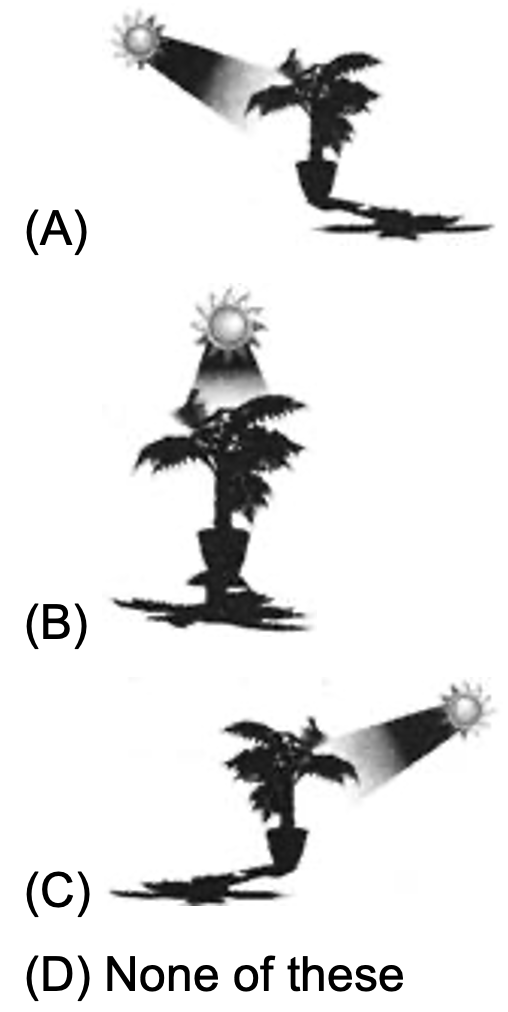
Answer:
B
Shadow at noon time is the shortest.
39. Vaibhav: The moon has light of its own.
Medha: All the stars have light of their own.
Which of the following statement are true?
(A) Vaibhav is true but Medha is wrong
(B) Both of them are true
(C) Vaibhav is wrong whereas Medha is true
(D) None of these
Answer:
C
The moon does not have the light of its own.
40. Which of the following is/are heavenly body/ bodies?
(A) Sun
(B) Stars
(C) Moon
(D) All of these
Answer:
D
All of the above. Sun, stars, moon all form the heavenly bodies.